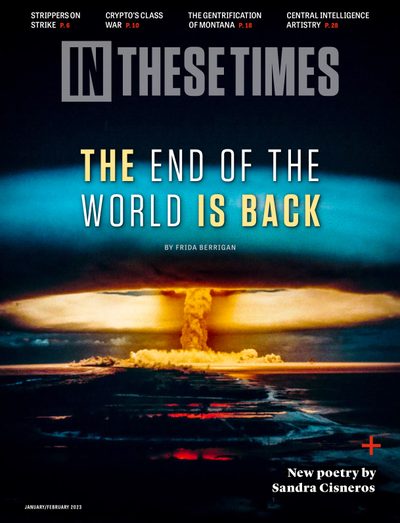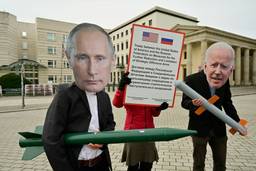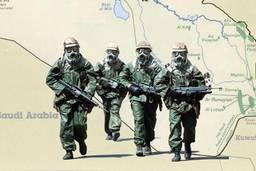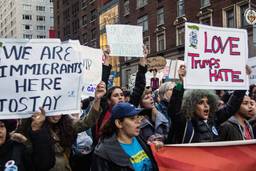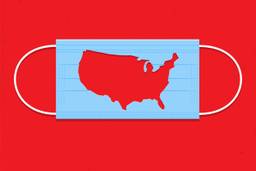How to Avoid Nuclear Stand-Offs That Threaten the Entire World
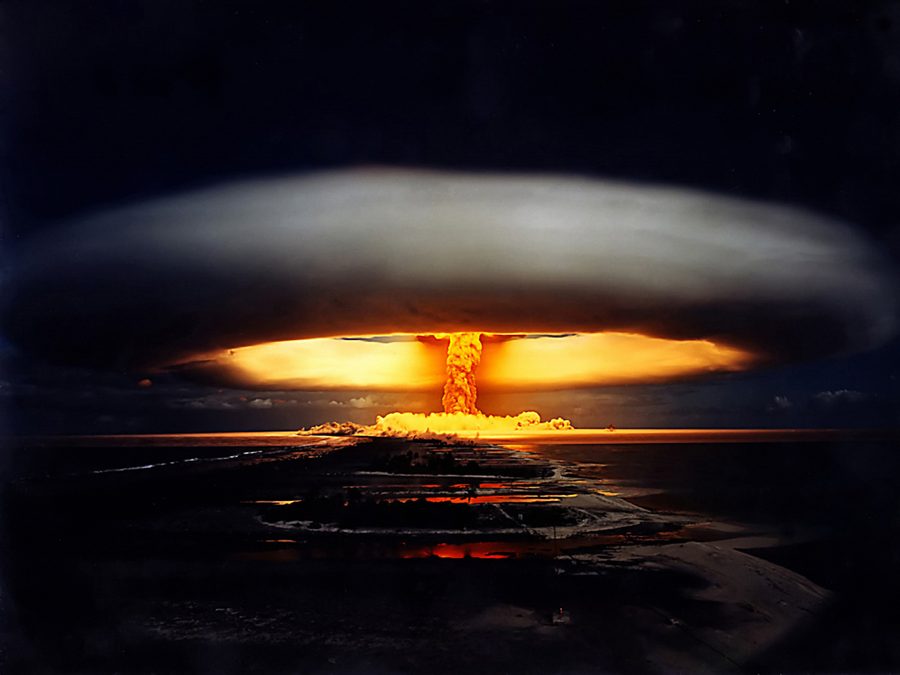
A nuclear explosion and atomic mushroom cloud in Mururoa, French Polynesia in 1970. (Photo by Galerie Bilderwelt via Getty Images)
Frida Berrigan on the Russia-Ukraine conflict and the fight for nuclear abolition.
The tit-for-tat coded rhetorical threats would sound fantastical and John le Carré-esque if they weren’t so real. In September 2022, Russian President Vladimir Putin cited U.S. “precedent” in using nuclear weapons in Japan and said Russia would “use all the means” at its disposal to “defend” itself in its war against Ukraine. About two weeks later, President Joe Biden said on CNN that the Pentagon did not need to be directed to prepare for a nuclear confrontation and warned that even accidental nuclear war could “end in Armageddon.” The U.S. military also took the unusual step, in October, of publicly disclosing the locations of its Ohio class submarines in the Arabian Sea and the Atlantic — within range of Russia. Each can unleash 192 nuclear missiles in one minute.
The Pentagon and the Kremlin rattling rusty old nuclear-tipped sabers is scary enough; these two powers possess more than 90% of all nuclear weapons between their two arsenals. But the new phase of this three-quarter-of-a-century-old rivalry includes Russian missile tests in April and October 2022, and a reported foray by the nuclear-capable submarine USS Rhode Island into the Mediterranean in November.
How likely is the use of nuclear weapons in the Russia-Ukraine conflict? Matthew Bunn, an analyst at Harvard, puts it at 10% to 20%, based on Putin’s public statements and increasing desperation after Russia’s military setbacks. Usually, those might be pretty safe odds, but in the context of weapons far more powerful than the bombs that leveled Hiroshima and Nagasaki 77 years ago and killed tens of thousands of people in flashes of light, those odds are not nearly slim enough.
One of the more likely scenarios discussed is Russia firing a so-called tactical nuclear warhead into Ukraine. Any U.S. or NATO military response, even without nukes, would risk an escalation into a broader nuclear conflict. A 2019 simulation by researchers at Princeton University’s Program on Science and Global Security showed how one tactical nuke could trigger a total nuclear exchange that kills 34 million people in just five hours.
Even this vocabulary of “tactical” weapons and nuclear “exchanges” reduces the real dangers of a nuclear attack to the scale of a skirmish on a Risk game board. The reality is that life after any nuclear war would be pretty awful for all survivors, even for those of us who live relatively far away from the flashpoints. An August 2022 paper in Nature Food found that a full-scale nuclear war between the United States and Russia would shroud the planet in 150 million tons of soot, making food production nearly impossible and starving most of humanity. The ejection of nearly 50 million tons of soot into the upper atmosphere from fires following a hypothetical regional nuclear war between India and Pakistan would decimate crops and fish globally, leaving more than 2 billion people dead within two years. These nightmare scenarios don’t even include the death and suffering from hazards like radioactive fallout and scorching sun exposure after the ozone layer is shattered by an atomic blast. As writer and activist Jonathan Schell puts it: “The birth of nuclear weapons in 1945 opened a wide, unobstructed pathway to the end of the world.”
Clear and present danger
U.S. peace activists are calling for the United States to play an active role in de-escalating the Russia-Ukraine war, given the nuclear threat and the war’s immense human toll. The tactics range from brokering a ceasefire to bringing both sides to the negotiating table to address grievances, including the ways the United States has encouraged the expansion of NATO since the end of the Cold War.
If the world can make it back from this brink, then perhaps a silver lining to this devastating, 21st-century war might be a new urgency behind the work for nuclear disarmament. The public has been reminded of the vast U.S. and Russian stockpiles of more than 4,000 nuclear warheads each, of which a total of more than 3,000 are actively deployed. To avoid finding ourselves here again, we need nuclear disarmament.
As long as there are nuclear weapons, they are — like Chekhov’s gun — waiting to go off.
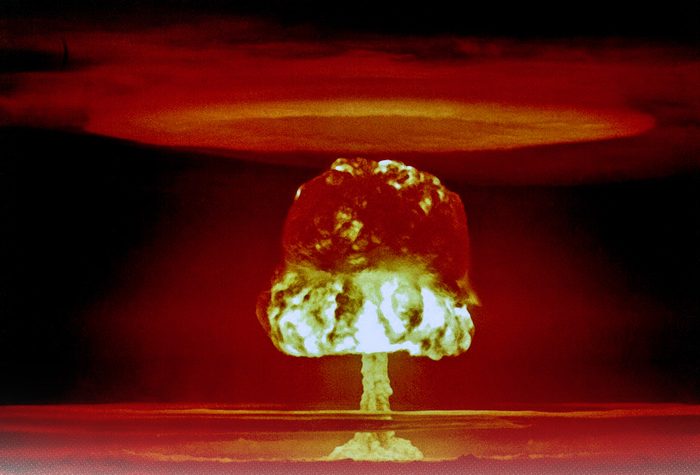
We know it’s possible to move the world toward disarmament because we’ve done it before. During the Cold War, an enormous movement — made up of lobbyists and Greenpeace activists, scientists and Catholic nuns and priests, Black Power proponents and Pan-Africanists, Pacific Islanders and Native American nations, lawyers and hippies, and so many others — turned the tide toward disarmament. Through a series of arms control agreements, Russia and the United States reduced their nuclear arsenals by about 87% from a peak of a combined 63,000 warheads in the mid-1980s.
As public attention moved away from nuclear weapons, weapons manufacturers fought to maintain and increase their market share in a changing world. Lockheed Martin, Boeing, Raytheon, General Dynamics and Northrop Grumman lobbied and threw around campaign contributions to push for increased weapons spending and more open markets for their weapons, including the expansion of NATO into former Soviet states. By 2009, the United States was spending $29 billion on the maintenance, operation and upgrading of its nuclear arsenal. Now, the only remaining arms control agreement between the United States and Russia expires in 2026, and Russia pressed pause on scheduled talks in November 2022. The United States is investing up to $1.5 trillion over the next 30 years on updating and modernizing its nuclear weapons and their air, sea and ground delivery systems. We don’t have hard numbers for Russia, but they are spending billions as well.
Tough times require bold vision. We can’t rest until the weapons are eradicated. Our demand can be nothing short of abolition.
Bright lights, big bombs
Cross-movement solidarity around a single cause is never easy — why unite around this cause and not another? — and the call to abolish nuclear weapons can sound like a distraction from work on other pressing concerns, like prison abolition or workers’ rights.
The antinuclear movement has experimented with different ways to remind everyone that nukes kill everyone. For example, when talking to someone from the Audubon Society, you might say, “If you care about birds, you should care about nuclear weapons — they’ll kill off all the birds!” But that strategy comes off as condescending and simplistic.
There is a more profound way to get at it: “Is your movement animated by a beautiful and equitable vision for the future of life on earth?” There’s a growing understanding that we’re all climate activists now, that because we all care about the future of human and nonhuman life, climate must be woven into everything, from how a municipality responds to the needs of the unhoused to what food or education policy should look like in 10 years. The Movement for Black Lives has a Red, Black & Green New Deal initiative, for example.
Nuclear war is on the same existential scale as climate change. Progressives of all stripes don’t have to drop everything to come to the “abolish nukes” demonstration, but we need to use all of our platforms and modalities to keep a spotlight on the nuclear stockpile until it is dismantled.
And there is a straightforward goal we can unite behind: Getting the United States to sign the Treaty on the Prohibition of Nuclear Weapons. The treaty is the only comprehensive, legally binding instrument that bans the development, possession, threat and use of nuclear weapons, and it includes a framework for verifiable nuclear dismantlement. The organizers of this crucial treaty won the Nobel Peace Prize in 2017. So far, 68 nations have ratified the treaty, but the list does not include any of the nuclear weapons states. If nuclear nonproliferation wasn’t a niche issue, there would be a massive call for the United States to sign the treaty, which commits any holder of nuclear weapons to “destroy them … in accordance with a legally binding, time-bound plan.”
If the idea of the United States committing unilaterally to disarmament sounds ludicrous, listen to the past. Former Presidents Ronald Reagan and Mikhail Gorbachev got close, pushed hard by the 1980s peace movement. Former President Barack Obama is the most recent U.S. president to pledge nuclear disarmament, and just the idea won him a Nobel Peace Prize. International goodwill flows to whomever is willing to take the first step. Once the pledge has been made, incremental and verifiable disarmament — weapons system by weapons system — is how trust will be built. The antiwar movement in Russia is paying a very high cost for opposing their nation’s invasion of Ukraine, so the U.S. peace movement will have to push on both nations.
Getting there will take massive public pressure and a really big spotlight. Because, if there is one thing the anti-nuclear movement has learned, it’s that nuclear weapons thrive in darkness.
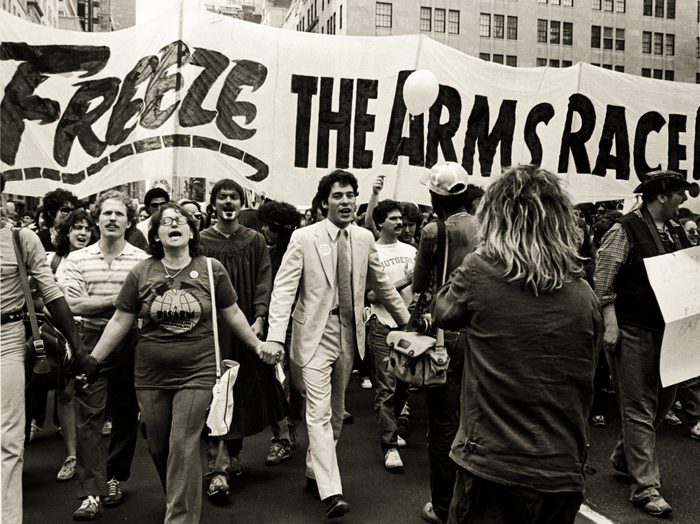
Desensitized destruction
After interviewing Hiroshima survivors, psychiatrist Robert Jay Lifton coined the term “psychic numbing” to try to capture the human brain’s inability to grasp catastrophe on a massive scale. One death matters greatly, but faced with 100,000 deaths, the brain shuts down. Psychologists of the 1980s documented psychic numbing in the American public around nuclear war, and Dr. Thomas Wear labeled the failure to have an appropriate fear of country-crushing weapons as “nuclear denial disorder.”
Psychic numbing and nuclear denial are dangerous for decision-makers and war planners as well as the public. The language of mass annihilation becomes sanitized into meaninglessness.
In 1954, U.S. General Curtis LeMay, as the head of Strategic Air Command, drew up plans for using 750 nuclear warheads preemptively against the Soviet Union. Tacticians under “Bombs Away” LeMay estimated the firepower would kill up to 100 million people. Such thinking isn’t just ancient history; a 2019 military briefing by the Joint Chiefs of Staff was similarly bullish on winning a nuclear war. “Using nuclear weapons could create conditions for decisive results and the restoration of strategic stability,” the document enthused.
Talk about psychic numbing! The only real conditions created by nuclear war would be decisive death and the restoration of pre-civilization.
In 2021, I gave a talk on civic engagement to students at Connecticut College. The conversation turned to nuclear weapons, as it always does when nuclear-armed submarines slice through the waters of the river right below the campus (the Groton Naval Submarine Base sits two miles away). Afterward, a young woman asked if I had ever heard of Roger Fisher; I hadn’t. She told me about his simple proposal to end nuclear war: Surgically implant the nuclear codes into the heart of a volunteer who would always be near the U.S. president. The aide carries a sharp knife, and if the president decides to launch an attack, they murder the aide and access the codes.
We locked eyes, this young person and I, in mute and mutual recognition that no less than this is what it should take to start a nuclear war that would kill millions and poison the world. Primal, visceral, messy, unprovoked murder.
I am so grateful to this young person for introducing me to this new idea, this way of cutting through the distancing verbiage that obscures most discussions around nuclear weapons. Later I learned that Fisher was a veteran, lawyer and Harvard professor who helped negotiate the end to the U.S.-backed civil war in El Salvador. He wrote up his nuclear solution in a 1981 essay in The Bulletin of the Atomic Scientists: “Blood on the White House carpet. It’s reality brought home.”
The idea resonated extra loud for me as the daughter of ardent antinuclear activists, both of whom spent long stretches in prison for their dramatic actions aimed at cutting through the mind-fog of nuclearism. As a kid, I spent winter vacations outside the (now inaccessible) Riverside entrance to the Pentagon. There, my parents and their friends would make a regular spectacle of ashes and blood. People dressed as death specters rang gongs while others dropped to the ground, writhing and screaming, dramatizing the aftermath of a nuclear explosion. One year, a group of women burnt locks of their hair in metal bowls to hang the awful, acrid smell of death over the whole mess. The Pentagon’s Riverside entrance has wide stone steps and tall limestone pillars that my father would take at a run, arcing a bottle of blood as high as he could while trying to outmaneuver po lice. As the blood ran down the pillars, it mingled with the ashes on the steps of the Pentagon. Arriving workers would fix their eyes on the door and pick their way over the writhing bodies, tracking the blood and ash into the building.
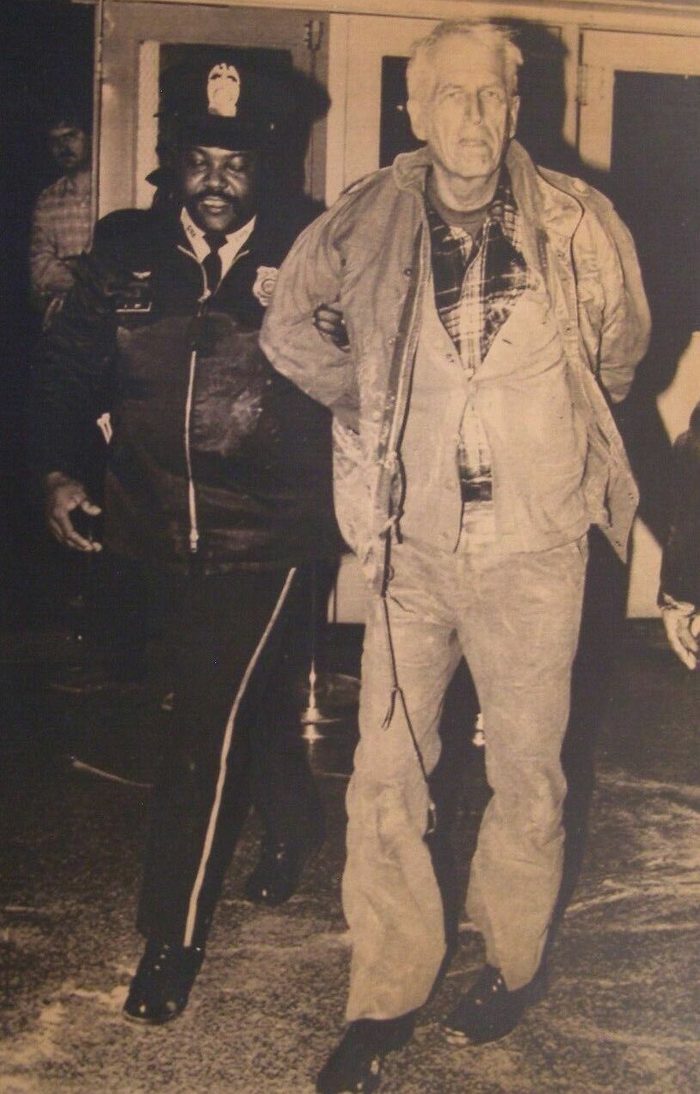
Resisting atomization
Not every nuclear abolitionist needs to throw blood on the Pentagon; the true power of the antinuclear movement came from the breadth of its participants and the diversity of their tactics. The movement encompassed analysts and lobbyists in three-piece suits wearing down their heels in the halls of power and the Greenpeace activists whose small boats interrupted sea-based nuclear testing from the Arctic to the South Pacific. It stretched from the Women’s Strike for Peace activists dogging U.S. lawmakers to the European feminists who camped at Greenham Common for nearly two decades starting in 1981, and it included the Catholics who exorcized nuclear facilities, held liturgies on missile silos and repeatedly trespassed on nuclear installations to beat swords into plowshares.
These activists were motivated by information and analysis from self-taught antinuclear investigators. The nuclear-industrial complex thrived in secrecy; when forced to be honest, it divulged mostly impenetrable information. In the face of this data-dumping, the movement built its own brain trust and established a cottage industry of think tanks and alternative research entities to counter and correct government misinformation. It tracked nuclear activities and disseminated its analysis to the grassroots, who organized in their local communities against the nuclear facilities scattered through literally every congressional district in this nation.
Even before the internet, antinuclear activists tracked down and exposed secret nuclear shipments and mobilized to block the trains or trucks. They filled jails, marched across countries, held massive teach-ins and convened international symposiums. They launched newspapers and magazines that remain vital today, including Nukewatch, Nuclear Watch and The Nuclear Resister.
New scholarship from historian Vincent Intondi seeks to recenter Black leadership in the antinuclear movement. He speaks to a new generation, reminding those who claim that the antinuclear movement was too white that the NAACP issued statements against nuclear weapons in 1946, while the vast majority of white Americans were pro-nukes. Malcolm X, Martin Luther King Jr., Duke Ellington, Marian Anderson, Langston Hughes, W.E.B. DuBois, Paul Robeson and Zora Neale Hurston all took early stands against nuclear weapons. As DuBois cannily observed, “If power can be held through atomic bombs, colonial people may never be free.”
The antinuclear movement was also intentional in building relationships with communities hit hardest by nuclear testing and mining, from the South Pacific to the Indigenous nations throughout the United States. The amplification of South Pacific and Native American voices put a human face on the mushroom cloud, helping to counter the abstraction of nuclear talk from our lived reality. The work to make nuclear dangers concrete and unite the non-nuclear nations as a bloc laid the groundwork for the Nuclear Weapons Free Zones — Latin America (1967), Southeast Asia (1995) and Africa (launched in 1996 and signed by all but 12 African countries), as well as the international movement that birthed the Treaty on the Prohibition of Nuclear Weapons.
The movement also fostered international solidarity and people-to-people connections across Cold War fault lines through bike rides and marches, joint declarations and synchronized demonstrations. These activities allowed activists to build an enduring trust and friendship that provided openings for state-level initiatives. An alphabet soup of treaties followed, building on one another like acronymed Lego bricks — SALT, START, ABM, CTBT. Each treaty has a compelling backstory, with activists pushing for unilateral disarmament, world flashpoints that pulled backroom negotiations onto front pages, and suited negotiators sparring over commas.
These small, decentralized, broad-based activities added up to the survival of the species.
The famous rally that drew some one million people to New York’s Central Park on June 12, 1982, is often seen as the pinnacle of the antinuclear movement’s power. The sun shone, the subways came to a standstill and the signs were homemade and beautiful and from all over the country. The days of action that followed were built around the UN’s Second Special Session on Disarmament. On June 14, a broad coalition put out the call “Blockade the Bombmakers,” and 161 groups worked in waves of blockades at the Permanent Missions to the UN of the five nuclear states. New York police made 1,691 arrests.
It is not hyperbole to assert that these actions drove Reagan and Gorbachev to the negotiating table. Gorbachev says as much in his 2020 book, What Is At Stake Now, writing how “millions of people took to the streets, engaged in people-to-people democracy, voiced their demands, found a common language — and politicians in the East and West finally responded.” Chronicler Lawrence Wittner notes that Reagan, too, responded to antinuclear pressure by making “disarmament a top priority.”
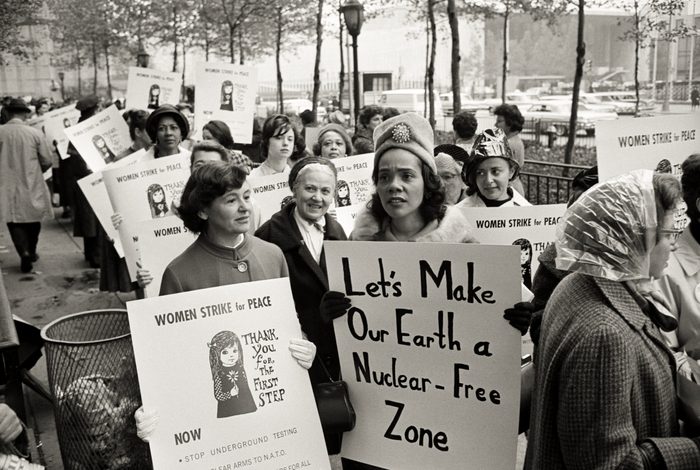
A new abolition
After the Cold War, the antinuclear movement dissipated but did not disappear.
Former Secretary of Defense William J. Perry, who oversaw the dismantling of 8,000 nuclear warheads during the Clinton administration, now has a podcast with his granddaughter, “At the Brink,” which maps out a road to disarmament.
Activism by faith groups still carries moral authority and reaches people who don’t get their news from Democracy Now. The archbishop of Santa Fe, N.M., for example, breathed new life into Catholic antinuclearism in January 2022 with a 50-page pastoral letter, “Living in the Light of Christ’s Peace: A Conversation Toward Nuclear Disarmament.”
Indigenous activists have carried out decades-long efforts against the devastation of their land by nuclear industry extraction. In the American Southwest — home to the National Nuclear Laboratories that, along with Lawrence Livermore in California, birthed nuclear weapons — the Indigenous-led Haul No! Coalition is fighting uranium mining and nuclear colonialism.
Internationally, the movement is still robust. The International Campaign to Abolish Nuclear Weapons (ICAN)— the group behind the Treaty on the Prohibition of Nuclear Weapons — was itself inspired by the International Campaign to Ban Landmines a decade earlier. Founded in Melbourne, Australia, ICAN has grown to 600 organizations across 110 countries since 2007.
The Treaty on the Prohibition of Nuclear Weapons corrects the flaws of the keystone 1970 Nuclear Nonproliferation Treaty, which erringly enshrined a nuclear hegemony even as it kicked off disarmament. The United States, the Soviet Union, China, France and the United Kingdom promised to disarm (and help develop projects for nuclear energy) as long as the rest of the world agreed not to pursue their own nuclear weapons. Of course, the five acknowledged nuclear nations also happened to serve as the permanent five members of the UN Security Council, with veto power over all initiatives. This so-called Grand Bargain, built on hegemonic imbalance, failed, and a succession of countries “achieved” nuclear weapons, including Israel in 1986 and India, Pakistan and North Korea in 1998.
The new global abolitionist movement understands there must be no more loopholes. The fact that Russia invaded Ukraine — twice! — undermines the very logic of a “nuclear peace,” the notion of geopolitical stability from nuclear parity. The Treaty on the Prohibition of Nuclear Weapons plots a way forward out of the long nuclear nightmare and toward a more horizontal internationalism.
Anyone who cares about the future of life on this planet can be an antinuclear activist. We can muster our towns to join Mayors for Peace and declare ourselves “nuclear free,” a gesture that’s more than symbolic in military-dependent communities like my own city of New London. We can ask our faith communities, unions and municipalities to divest from nuclear weapons manufacturers with the Don’t Bank on the Bomb campaign. All of our left movements can lift up the Treaty on the Prohibition of Nuclear Weapons, demanding that the annual $50 billion spent on nukes in the United States be redirected to human needs.
And we can fill the streets, starting with dozens and building until we are millions.
We did it once. We can again. We have to.
Frida Berrigan writes for TomDispatch, Waging Nonviolence and other outlets. Her book, It Runs in the Family: On Being Raised By Radicals and Growing Into Rebellious Motherhood, was published by OR Books in 2015. She lives in New London, Conn., with her husband, three kids and six chickens.
